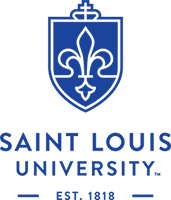Newswise — ST. LOUIS -- David Griggs, Ph.D., director of biology at Saint Louis University’s Center for World Health & Medicine, has received a $1 million R01 grant from the National Institutes of Health to investigate the development of what could be a new class of drugs to treat bone diseases.
The grant, from the National Institute of Arthritis and Musculoskeletal and Skin Diseases, is for three years. Griggs, and co-investigator Rajeev (Reggie) Aurora, Ph.D., associate professor of molecular microbiology and immunology at Saint Louis University, will screen more than 100,000 small molecules to see if they might be turned into medications to treat osteoporosis and possibly other rarer conditions such as osteopetrosis.
Specifically, they are looking for a compound that mimics the activities of a natural protein called RANKL (receptor-activator of NF-kappa B ligand), which triggers a cascade of cellular interactions that cause bones to deteriorate, leading to post-menopausal osteoporosis, rheumatoid arthritis and periodontitis, a form of gum disease.
The expression of RANKL stimulates osteoclasts, which are a type of bone cell, that activate a process that removes bone from the body. Scientists have known that RANKL plays an important role in causing osteoporosis, which is a relatively common disease that can come with aging.
However, until recently, they hadn’t known that low amounts of RANKL have the opposite effect -- suppressing the activity of osteoclasts -- to promote bone growth.
A team of Saint Louis University scientists led by Aurora, who Griggs had worked with when they both were researchers at Pharmacia, discovered that when mice with osteoporosis were treated with small doses of RANKL, instead of losing more bone, they surprisingly gained it. RANKL stimulated a type of immune cell, which damped the function of the osteoclast cell that triggered bone deterioration. The findings were published in the Journal of Bone and Mineral Research in August 2015.
“Reggie talked to me about his findings and we recognized there was a potential of a new type of therapeutic medication here. A small molecule that mimicked the RANKL protein would have its advantages. You could put a compound in a pill, which isn’t usually possible for a protein. Compounds are less costly to manufacture and can be stored at room temperature, unlike a protein, which needs to be frozen and can deteriorate quickly,” Griggs said.
“The ultimate goal is to use high through-put screening to identify a compound to do what RANKL does. Theoretically it could be used to treat osteoporosis and we also recognize there is potential to treat osteopetrosis, a rare condition in which bones become too dense.”
According to the International Osteoporosis Foundation, osteoporosis is a growing problem that affects half of women and 20 percent of men older than 50. Of this group, a third of women and a quarter of men will break a hip, forearm or spine before they turn 60 because their bones are deteriorating. In 2005, between a fifth and quarter of those with osteoporosis and a bone fracture died within the year, and the mortality is expected to quadruple in 10 years.
Osteopetrosis is a much rarer inherited condition, in which the bones become so dense, they break.
Saint Louis University already has conducted pilot screenings of some small molecules to see if they display similar properties as RANKL, and is the process of refining its testing processes.
When RANKL is added to cells, it induces an enzyme that can be measured when it makes the cells fluorescent. The cells also change shape when activated by RANKL.
“We are looking for compounds that do what RANKL does, and we’ll know we’re on the right track if the enzyme it induces can be detected by fluorescence,” Griggs said.
Then, the pool of molecules will be narrowed further by rounds of follow-up tests that each provide more information about how these compounds are working and if they’re mimicking other aspects of RANKL’s behavior. The compounds that display characteristics most like RANKL ultimately will be evaluated in a mouse model.
“This is early stage discovery of drug compounds,” Griggs said. “Our hope is that our work potentially will give rise to an entirely new class of drugs to treat bone disorders.”
Saint Louis University’s Center for World Health & Medicine is dedicated to the discovery and development of safe, effective and affordable therapies for rare and neglected diseases. Its team of former pharmaceutical scientists collaborates with biomedical researchers within Saint Louis University as well as international disease experts, aiming to translate fundamental discoveries into promising new drugs.
